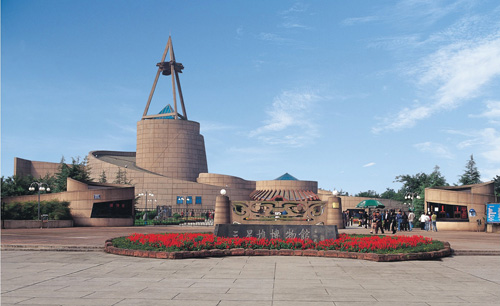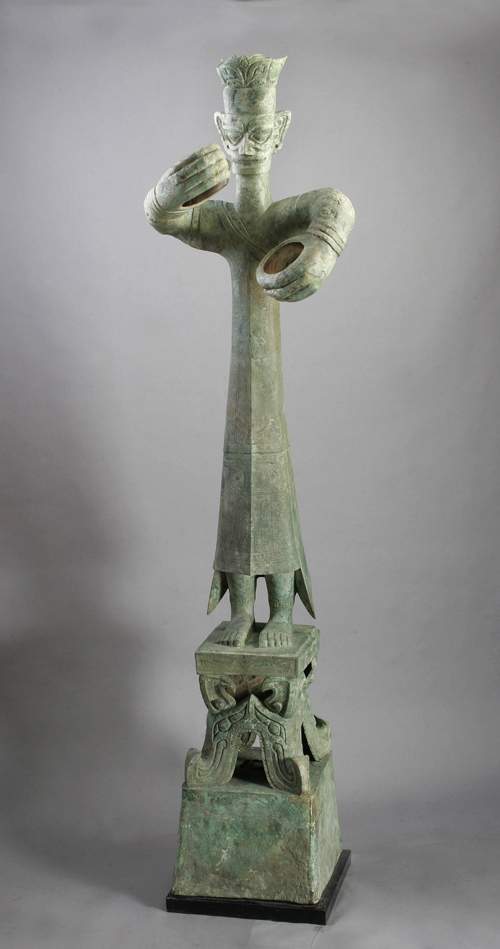In the area of Nanxing Town in Guanghan City, on the land occupying 6 square kilometers, there are such vital remains as houses, ash pits, tombs, sacrificial pits and walls of ancient Shu people spreading.
From the bronze ware, gold ware, jade ware, and earthenware found at this site, these cultures reflect an ancient civilized society which was not recorded in history. The inscriptions on gold sticks and symbols found in Banpo village are different, while the mask with graceful eyebrows and bright eyes seems like it’s Arabian. The money tree also represents money worship in that time, all of which complicates life and causes confusion among people.
The Sanxingdui Museum is located at the northeast corner of the Sanxingdui site, the key national heritage conservation unit. It lies on the west side of Xiyazihe River in Guanghan, a famous historic and cultural city in the Sichuan Province. It is 38 km from Chengdu in the south and 26 km distant from Deyang in the north, which is a large-scale modern theme remnants museum. The museum laid foundation in August 1992 and formally opened in October 1997.

The Sanxingdui site occupies an area of about 12 square kilometers and has a history ranging from 3000 to 5000 years old. It is the remains of an ancient city, country and Shu culture with the widest scope, the longest history and the richest cultural connotation found in the Southwest region as of yet. At the site there are remains of east, west, and south oriented walls as well as an inner wall in Yueliang Bay. Sanxingdui is known as one of the greatest archaeological finds in China. Regarding the beginnings of Chinese civilization, The Changjiang River basin is as important of a region as the Yellow River valley. It is renowned as “the source of the Changjiang River civilization”.
The Sanxingdui relics are a valuable cultural heritage of mankind. Among the vast and splendid cultures in China, it is highly appreciated, considered to have the most historical, scientific and cultural value. Among these ancient Shu treasures, there are many wonderful and mysterious types of bronze ware. These include human-form bronze ware pieces with a height of 2.62 m, bronze masks with width of 1.38 m, even bronze trees with height of 3.95 m. All of which are known as some of the most unique and outstanding relics in the world. The gold ware sticks and the various jade ware pieces are unprecedented treasures.




